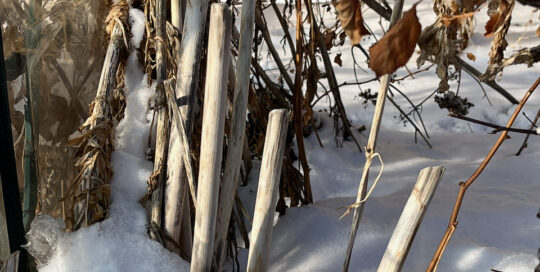Keep nesting materials natural for the birds
Views: 4246

It’s so nice to have the birds singing and engaged in the business of nest making. Watching them diligently bring in bits of grass and straw to create a proper place for their young ones made me remember the importance of providing safe materials for them. Dr. Beth Hill, DVM, of the Upper Missouri Audubon Society, enlightened me with a few tips on giving the birds what they need, or don’t, when we talked last week.
Think natural for nests because when it comes to nest-making materials, yarn, ribbon, baling twine, and fishing line can be deadly. I’ve seen photos of people recommending setting out balls of yarn or ribbon as a colorful offering for the birds to use. Don’t do it. Hill told me how string and lines wind around the birds’ legs and can trap them in their nests. Ospreys and baling twine particularly don’t mix. She said there are some nests loaded with pounds and pounds of the bright orange string. Many osprey have been injured or killed because of it.
Fishing Line
Fishing line is equally as harmful. When a hook or lure is trapped in the brush, it’s easy to cut it or pull it free leaving a length of line. Not only will birds pick up errant line, Hill said some species are attracted to shiny lures left dangling in the brush. Think of the consequences if a bird swallows a lure. I know most anglers hate to lose a lure. This makes putting forth the effort to retrieve it even more important.
Plants
Hill also pointed out that even plants can cause problems with birds. She told me how goldfinches have been known to be caught up in the tenacious burrs of the burdock plant while attempting to harvest seeds. It’s just another excellent reason to eradicate them from your landscape. It also emphasizes the importance of planting varieties native to your area. Not only do native plants provide seeds and other materials the birds need, they support the insects needed for them, too. As Hill said, “Growing birds need bugs. They eat tons of bugs. They are the best pest control in the world.”
Chicks
Once the chicks are hatched people often find the little ones on the ground. It’s very tempting to bring them inside. (Can you tell I’ve done this once or twice growing up?) But it rarely works. Hill recommends just let them where they are, unless of course, your cat or some other danger is lurking right around the corner. In that case, you can carefully lift it back into the nest or put it in a safe place.
The thought that the parents will reject it because of the human scent is a fallacy. However, what we often don’t realize is baby birds often do leave the nest before they are able to fly. She says the parents are most likely close by keeping an eye on it, and doing what they need to do. She points out that you should also not sit and watch it. Either a predator could be nearby, or it will bother the parents enough that they will leave the area.
Birds are an important part of our landscape, especially is we want efficient bug eaters in our garden. Now is the time when we need to be aware of what we might provide them, either purposefully or inadvertently, that sets the stage for the rest of the year.
Meet Amy Grisak
Amy is a freelance author and photographer in Great Falls, MT who specializes in gardening, foods, and sustainable agriculture. She provides information on every kind…
Amy's Recent Posts

This Little Piggy is a Problem: Dealing with Feral Hogs








